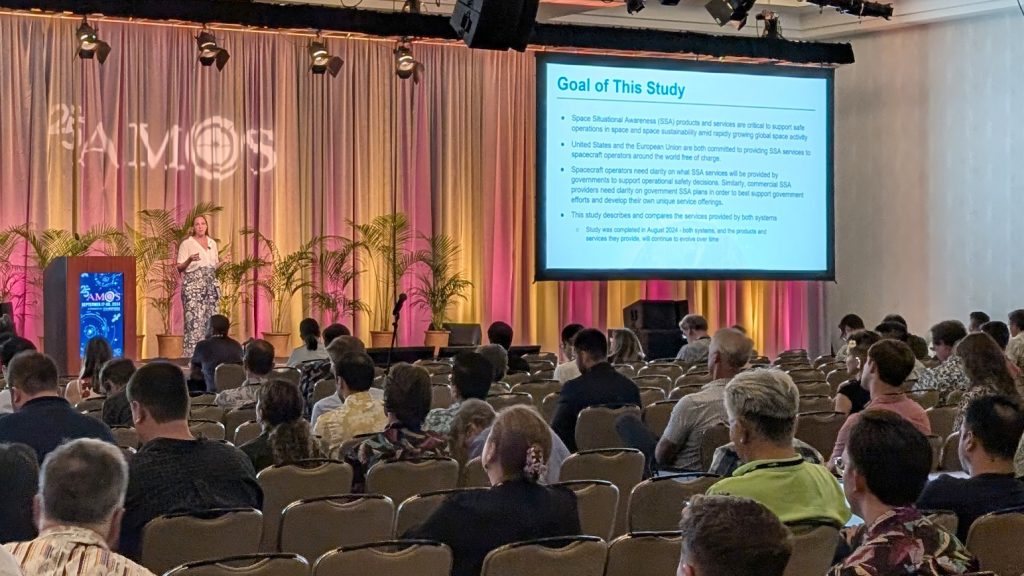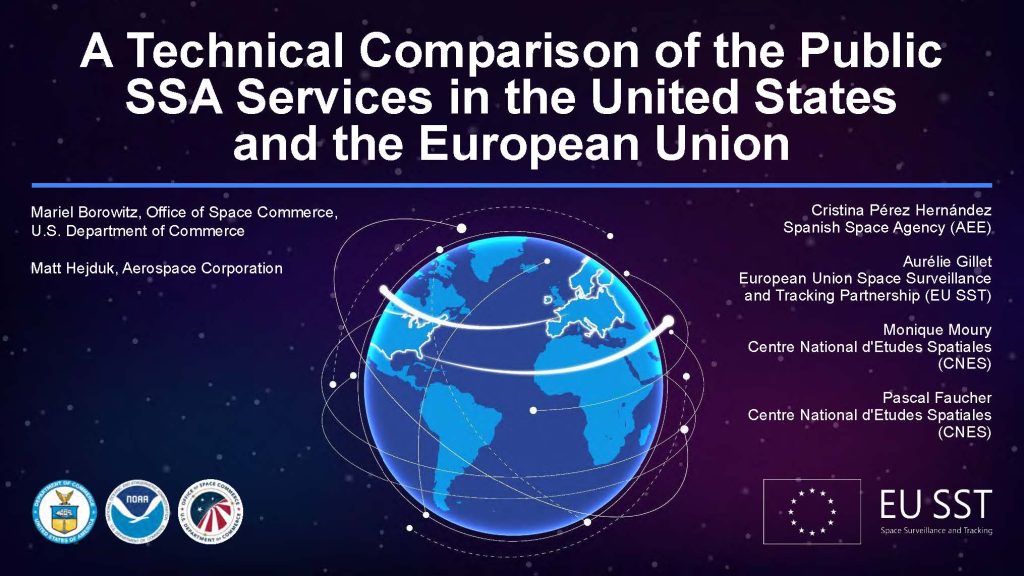Joint Paper Compares SSA Services Provided by TraCSS, EU SST

At this week’s Advanced Maui Optical Surveillance (AMOS) Conference, the Office of Space Commerce (OSC) and the European Union (EU) released a joint paper comparing the services provided by OSC’s Traffic Coordination System for Space (TraCSS) and the EU Space Surveillance and Tracking (EU SST) capability.
Both TraCSS and EU SST, in partnership with the commercial SSA industry, will offer free space situational awareness (SSA) services to spacecraft operators worldwide to prevent in-orbit collisions. The new study, conducted by personnel from both programs, highlights similarities and differences between the two systems.
A detailed breakdown reveals significant alignment between TraCSS and EU SST, particularly in collision avoidance services (see table). Some differences remain in the availability of maneuver screenings and anomaly reporting. The study also identifies potential future developments, such as launch collision avoidance and improved operator ephemeris, aimed at addressing the evolving needs of the space industry.
EU SST & TraCSS Services Comparison Summary Table (as of August 2024)
| Service | EU SST | TraCSS |
|---|---|---|
| 1. SSA Information as a Service | ||
| 1.1 Contact information | No | Yes |
| 1.2 Satellite attributes | No | Yes |
| 1.3 O/O ephemerides with planned maneuvers | No | Yes |
| 1.4 Catalog of space objects | Future Phase | Yes |
| 2. In-Orbit Collision Avoidance Service | ||
| 2.1 Routine catalog and O/O ephemerides screening and CDM production | Yes | Yes |
| 2.2 Risk Assessment and Detection and Notification of High Interest Events/Emergency Events | Yes | Yes |
| 2.3 Additional tracking on the secondary and/or primary objects | Yes | Yes |
| 2.4 Basic CAM Options for selection by O/O² | Yes | Yes |
| 2.5 Candidate CAM Screening | Yes | Yes |
| 2.6 For selected HIE/Emergency Events, dialogue with O/O | Yes | Yes |
| 3. Candidate Maneuver Screening | No | Yes |
| 4. Spacecraft Anomaly Reporting | No | Yes |
| 5. Reentry Monitoring Service | Yes | Future Phase |
| 6. Fragmentation Notification and Analysis Service | Yes | Yes (Notification Only) |
| 7. Potential Future Services Under Consideration | ||
| 7.1 Launch Collision Avoidance service | TBD | Future Phase |
| 7.2 Improved O/O Ephemerides | TBD | TBD |
| 7.3 Space Weather Information and Atmospheric Drag Model | No | TBD |
| 7.4 Traffic Coordination Platform as a Service | TBD | TBD |
This study represents a step toward greater transparency and collaboration as the space sector continues to grow. The TraCSS and EU SST teams are committed to continuing their work with global partners to promote space safety and sustainability.
Space debris and collision avoidance are challenges for all spacecraft, regardless of their nation of registry. As laid out in the Office of Space Commerce’s Vision for Global SSA Collaboration, international cooperation is key to enhancing data consistency, coverage, and transparency. The joint paper, titled “A Technical Comparison of the Public SSA Services in the United States and the European Union,” builds on this vision.
It will also be published at https://amostech.com/amos-technical-papers/
Update:

On September 19, 2024, Dr. Mariel Borowitz delivered a presentation about the joint paper at AMOS.